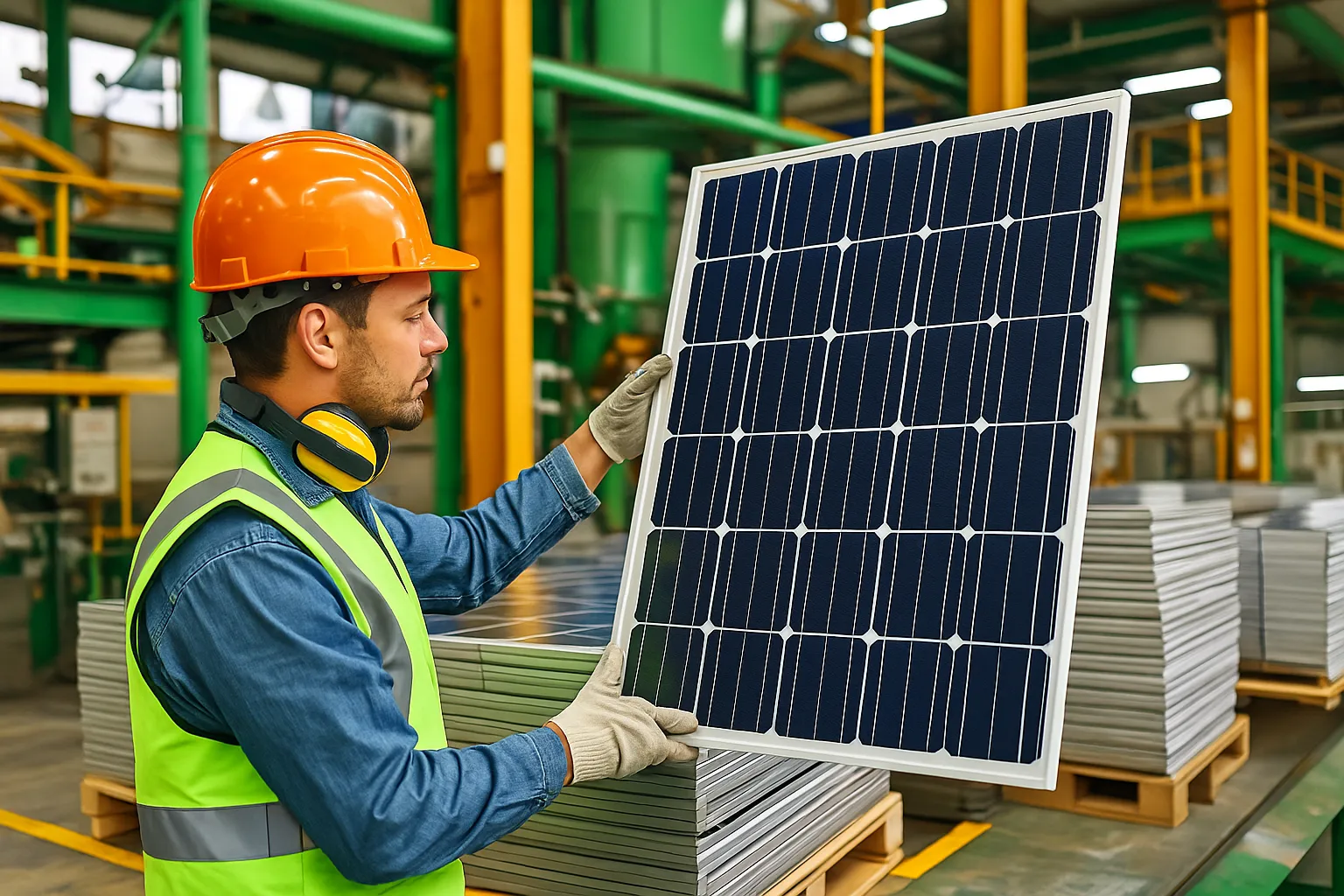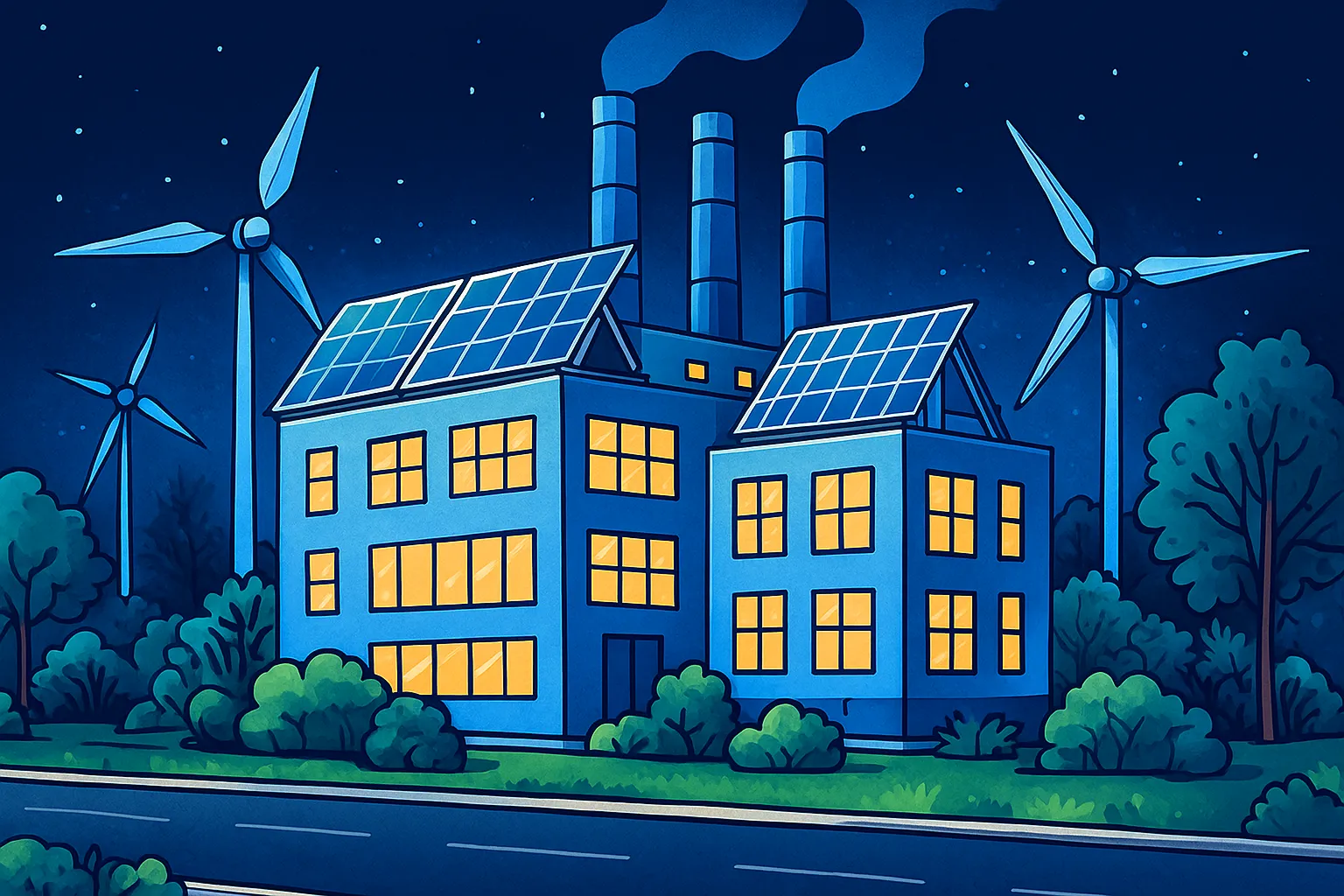Industry 4.0 Markets Itself as the Engine of Green Manufacturing
Industry 4.0 has been introduced to the world as more than a technological revolution. It is promoted as a pathway to a cleaner and more sustainable industrial future. Smart factories equipped with sensors, robotics, and artificial intelligence promise to reduce waste, optimize energy consumption, and streamline supply chains. Automation is presented as a tool to eliminate inefficiencies, while connected systems are framed as the backbone of a circular economy in which materials are reused rather than discarded.
This vision has gained traction because it aligns innovation with responsibility. In public discussions, the narrative of green manufacturing tied to Industry 4.0 suggests that technology can serve both profit and the planet. Reports highlight the possibility of predictive maintenance reducing unnecessary production, or data-driven logistics cutting down emissions. Industry leaders emphasize that sustainability is no longer a peripheral concern but an integral part of strategy. The promise is ambitious: a future where digital transformation creates factories that are efficient, adaptive, and environmentally conscious.
Corporate Messaging Turns Sustainability Into a Selling Point

Green manufacturing has become a central theme in corporate storytelling. Annual reports, keynote speeches, and glossy marketing campaigns frequently highlight how Industry 4.0 tools are being used to shrink carbon footprints and promote resource efficiency. The message is clear: adopting advanced technologies is framed not only as a business advantage but also as evidence of social responsibility. Companies that once marketed themselves solely on price and performance now emphasize sustainability as a defining feature of their brand identity.
This shift has proven persuasive for multiple audiences. Investors are more willing to fund companies that showcase sustainable practices, especially in an era when environmental, social, and governance metrics influence capital allocation. Customers respond positively to brands that project a commitment to the planet, rewarding them with loyalty and advocacy. Policymakers also play a role, as regulatory environments increasingly favor companies that demonstrate measurable progress toward environmental goals.
The result is a landscape in which sustainability narratives are woven into corporate strategies as both a competitive differentiator and a shield against criticism. Industry 4.0 technologies are frequently highlighted as proof points, providing companies with a way to present themselves as leaders of a greener future.
The Hidden Costs of High-Tech Sustainability Efforts

While Industry 4.0 is promoted as a sustainable revolution, the technologies behind it carry their own environmental burdens. Data centers that power artificial intelligence consume vast amounts of electricity, often relying on energy grids that are still dependent on fossil fuels. Advanced sensors, robotics, and connected devices require rare earth minerals, the extraction of which generates significant ecological and social costs. The very supply chains that Industry 4.0 aims to optimize are themselves dependent on materials and processes that strain ecosystems.
These contradictions complicate the image of green manufacturing. A smart factory may reduce waste on the production floor, yet the upstream impacts of producing high-tech machinery and maintaining digital infrastructure often remain hidden from the narrative. Recycling programs may be promoted, but the challenge of disposing of complex electronic components persists. The push for efficiency can inadvertently drive higher levels of production, offsetting some of the sustainability gains.
By focusing on selective outcomes, companies risk presenting an incomplete picture of what green manufacturing actually entails. The hidden costs reveal that the path toward sustainable industry is more complex than marketing materials suggest, raising doubts about the depth of current commitments.
Green Manufacturing Oscillates Between Real Progress and Greenwashing

The discourse around green manufacturing in Industry 4.0 is caught between authentic progress and polished exaggeration. Some companies have implemented meaningful changes, such as reducing energy consumption with predictive analytics, implementing closed-loop recycling, and adopting renewable energy sources for production. These initiatives show that technology can indeed support measurable environmental benefits. Yet for every genuine example, there are cases where sustainability claims amount to little more than marketing spin.
Greenwashing emerges when companies highlight selective achievements while ignoring less favorable realities. A factory might proudly announce a reduction in emissions per unit produced while quietly increasing total output, leading to a higher overall footprint. Another may adopt eco-friendly slogans without publishing transparent data to support its claims. The ambiguity allows companies to project a responsible image while leaving stakeholders uncertain about the actual impact.
This oscillation creates both opportunity and skepticism. Green manufacturing can generate real improvements, but the blurred line between progress and performance raises the question of how much of the sustainability promise is genuine and how much is crafted for appearances. The tension defines the debate surrounding Industry 4.0’s green ambitions.
Stakeholders Struggle to Separate Impact From Illusion

The ambiguity surrounding green manufacturing leaves stakeholders with the difficult task of distinguishing genuine impact from polished illusion. Investors are eager to identify companies that combine profitability with responsibility, yet they often rely on reports written by the very firms they are funding. Customers reward sustainability claims with loyalty, but they lack the tools to verify whether a brand’s practices truly align with its messaging. Policymakers seek to incentivize greener production, yet enforcement is uneven, allowing firms to exploit loopholes or exaggerate their progress.
This struggle reflects a deeper problem: transparency is often missing. Without standardized metrics or independent verification, sustainability becomes a matter of trust rather than proof. As a result, stakeholders must navigate a landscape where some companies lead with authentic initiatives while others rely on vague promises and selective disclosures. The difficulty in separating signal from noise creates frustration, but it also underscores the growing demand for accountability. Industry 4.0 may have the tools to make manufacturing greener, yet the lack of clear standards means that progress remains uneven and credibility remains fragile.
From Empty Promises to Accountability: Building a Real Sustainable Future

Green manufacturing tied to Industry 4.0 carries enormous potential, but its credibility depends on measurable results rather than polished promises. The future of sustainability in manufacturing will not be defined by corporate slogans or selective achievements. It will be judged by transparent metrics, independent audits, and consistent accountability across global supply chains.
For business leaders, this requires moving beyond using sustainability as a communications strategy and embedding it as a structural priority. Investors and policymakers can accelerate this shift by demanding verifiable data, while customers will continue to pressure brands that fail to live up to their commitments. The promise of Industry 4.0 will only be fulfilled when its technologies are applied with rigor and honesty, turning efficiency into genuine environmental progress. A sustainable future is possible, but only if the gap between public relations and real impact is decisively closed.
What does Industry 4.0 mean?
It’s the digital transformation of manufacturing—connecting machines, processes, and data for smarter operations.
How does H-in-Q support Industry 4.0?
We build AI models that predict demand, optimize supply chains, monitor machine performance, and improve quality control.
What kind of data is used?
IoT sensors, machine logs, production flows, and ERP data are mined for predictive insights.
What solutions are available?
Predictive maintenance, demand forecasting, process optimization, and anomaly detection dashboards.
Why is AI critical in Industry 4.0?
Because efficiency gains depend on real-time analytics, automated decision-making, and seamless digital workflows.
Can SMEs adopt Industry 4.0 solutions?
Yes. Our modular AI stack makes it cost-effective and scalable for smaller manufacturers too
References
- Integrating Industry 4.0 for Enhanced Sustainability – ScienceDirect
- Sustainable Manufacturing in Industry 4.0: An Emerging Agenda – Taylor & Francis Online
- Industry 4.0 for Sustainable Manufacturing: Opportunities at the Product, Process, and System Levels – Resources, Conservation & Recycling
- Leveraging Industry 4.0 for Sustainable Manufacturing – MDPI Applied Sciences
- A Framework for Sustainable Manufacturing: Integrating Industry 4.0 Technologies with Industry 5.0 Values – MDPI Sustainability
- https://h-in-q.com/analytics/



